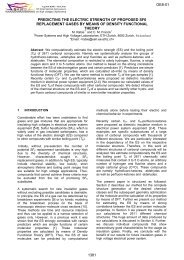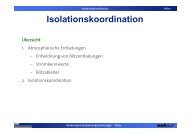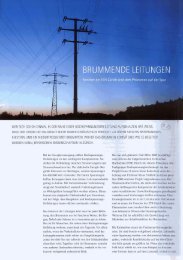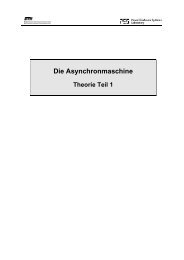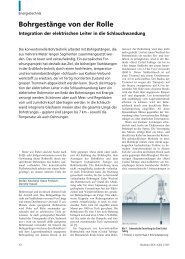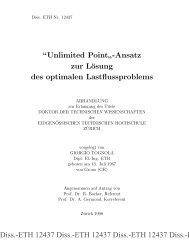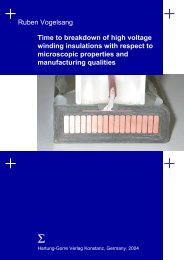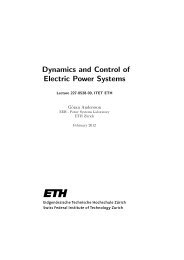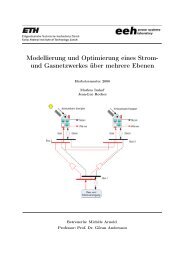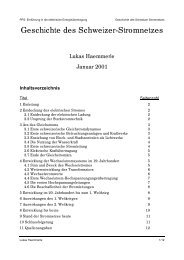Urs Krüsi, Bestimmung und Beurteilung der Charakteristika von ...
Urs Krüsi, Bestimmung und Beurteilung der Charakteristika von ...
Urs Krüsi, Bestimmung und Beurteilung der Charakteristika von ...
Sie wollen auch ein ePaper? Erhöhen Sie die Reichweite Ihrer Titel.
YUMPU macht aus Druck-PDFs automatisch weboptimierte ePaper, die Google liebt.
viii Abstract<br />
nical scatter could be reduced to -3.1 ms to 2.7 ms. This scatter can now<br />
be used to calculate the breaker’s suitability for controlled switching. A<br />
method is developed that calculates the frequency of occurrence of the expected<br />
switching transients. The requirements concerning these transients<br />
vary greatly among power utilities. It is therefore not practical to specify a<br />
hard limit. Thus, the suitability of a circuit-breaker can hardly be judged<br />
absolutely, but rather only whether it is more or less suitable. One of the<br />
main features of the presented method is that no time-consuming statistical<br />
simulations of a circuit-breaker are needed. The application of the<br />
method is demonstrated on an example of a fictitious case study.<br />
The de-energization of capacitive loads is another switching duty that is<br />
closely related to the statistics of the dielectric strength of moving contacts.<br />
A similar mathematical description of the dielectric strength of the opening<br />
contact gap was able to be used. The goal is to determine the influence of<br />
the prolonged arcing time on the restrike probability in a quantitative manner.<br />
In combination with results from development tests, this model allows<br />
the estimation of the circuit-breaker’s capability to de-energize capacitive<br />
loads at higher voltages and/or frequencies, by taking into account the<br />
statistical behavior of the opening gap. The resulting restrike probabilities<br />
are given as a function of arcing time and RDDS. These results are applied<br />
to the evaluation of laboratory tests 1 on a HVAC SF6 circuit-breaker. In<br />
this case, an arcing time of 2.8 ms allows an increase of the frequency to<br />
66 Hz and an increase of the voltage by 15%. The calculated restrike probabilities<br />
allow determination of the uprating potential of a circuit-breaker.<br />
The higher restrike probability at higher frequencies and/or voltages can<br />
be compensated with a prolonged arcing time — in some cases even overcompensated.<br />
Two new possible applications of controlled switching have been demonstrated<br />
in this thesis. The benefits of controlled switching for installed<br />
circuit-breakers is now quantifiable, and the influence of the arcing time on<br />
the restrike probability of a circuit-breaker can be estimated reasonably.<br />
1 Per Jonsson, ABB Sweden



